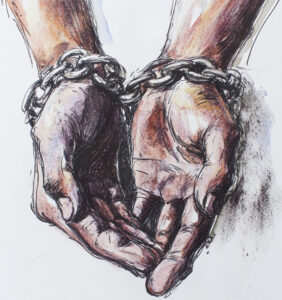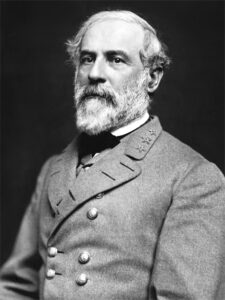 The execution of CEO Brian Thompson has brought the dystopian but highly profitable American health care system into the spotlight. While some are rightfully expressing compassion for Thompson’s family, the overwhelming tide of commentary is about the harms Americans suffer because of the way the health care system is operated. In many ways, this incident exposes many aspects of the American nightmare such as dystopian health care, the rule of oligarchs, the surveillance state, and gun violence.
The execution of CEO Brian Thompson has brought the dystopian but highly profitable American health care system into the spotlight. While some are rightfully expressing compassion for Thompson’s family, the overwhelming tide of commentary is about the harms Americans suffer because of the way the health care system is operated. In many ways, this incident exposes many aspects of the American nightmare such as dystopian health care, the rule of oligarchs, the surveillance state, and gun violence.
As this is being written the identity and motives of the shooter are not known. However, the evidence suggests that he had an experience with the company that was bad enough he decided to execute the CEO. The main evidence for this is the words written on his shell casings (deny”, “depose”, and “defend”) that reference the tactics used by health insurance companies to avoid paying for care. Given the behavior of insurance companies in general and United Healthcare in particular, this inference makes sense.
The United States spends $13,000 per year per person on health care, although this is just the number you get when you divide the total spending by the total number of people. Obviously, we don’t each get $13,000 each year. Despite this, we have worse health outcomes than many other countries that spend less than half of what we do, and American life expectancy is dropping. It is estimated that about 85 million people are either without health care insurance or are underinsured.
It is estimated that between 45,000 and 60,000 Americans die each year because they cannot get access to health care on time, with many of these deaths attributed to a lack of health insurance. Even those who can get access to health care face dire consequences in that about 500,000 Americans go bankrupt because of medical debt. In contrast, health insurance companies are doing very well. In 2023, publicly traded health insurance companies experienced a 10.4% increase in total GAAP revenue reaching a total of $1.07 trillion. Thomson himself had an annual compensation package of $10.2 million.
In addition to the cold statistics, almost everyone in America has a bad story about health insurance. One indication that health insurance is a nightmare is the number of GoFundMe fundraisers for medica expenses. The company even has a guide to setting up your own medical fundraiser. Like many people, I have given to such fundraisers such as when a high school friend could not pay for his treatment. He is dead now.
My own story is a minor one, but the fact that a college professor with “good” insurance has a story also illustrates the problem. When I had my quadriceps repair surgery, the doctor told me that my insurance had stopped covering the leg brace because they deemed it medically unnecessary. The doctor said that it was absolutely necessary, and he was right. So, I had to buy a $500 brace that my insurance did not cover. I could afford it, but $500 is a lot of money for most of us.
Like most Americans, I have friends who have truly nightmarish stories of unceasing battles with insurance companies to secure health care for themselves or family. Similar stories flooded social media, filling out the statistics with the suffering of people. While most people did not applaud the execution, it was clear that Americans hate the health insurance industry and do so for good reason. But is the killing of a CEO morally justified?
There is a general moral presumption that killing people is wrong and we rightfully expect a justification if someone claims that a killing was morally acceptable. In addition to the moral issue, there is also the question of the norms of society. Robert Pape, director of the University of Chicago’s project on security and threats, has claimed that Americans are increasingly accepting violence as a means of settling civil disputes and that this one incident shows that “the norms of violence are spreading into the commercial sector.” While Pape does make a reasonable point, violence has long been a part of the commercial sector although this has mostly been the use of violence against workers in general and unions in particular. Gun violence is also “normal” in the United States in that it occurs regularly. As such, the killing does see to be within the norms of America, although the killing of a CEO is unusual.
While it must be emphasized that the motive of the shooter is not known, the speculation is that he was harmed in some manner by the heath insurance company. While we do not yet know his story, we do know that people suffer or die from lack of affordable insurance and when insurance companies deny them coverage for treatment.
Philosophers draw a moral distinction between killing and letting people die and insurance companies can make the philosophical argument that they are not killing people or inflicting direct harm. They are just letting people suffer or die for financial reasons when they can be helped. When it comes to their compensation packages, CEOs and upper management defend their exorbitant compensation by arguing that they are the ones making the big decisions and leading the company. If we take them at their word, then this entails that they also deserve the largest share of moral accountability. That is, if a company’s actions are causing death and suffering, then the CEO and other leadership are the ones who deserve a package of blame to match their compensation package.
It is important to distinguish moral accountability from legal accountability. Corporations exist, in large part, to concentrate wealth at the top while distributing legal accountability. Even when they commit criminal activity, “it’s rare for top executives – especially at larger companies – to face personal punishment.” One reason for this is that the United States is an oligarchy rather than a democracy and the laws are written to benefit the wealthy. This is not to say that corporate leaders are above the law; they are not. They are wrapped in the law, and it generally serves them well as armor against accountability. For the lower classes, the law is more often a sword employed to rob and otherwise harm them. As such, one moral justification for an individual using violence against a CEO or other corporate leader is that might be the only way they will face meaningful consequences for their crimes.
The social contract is supposed to ensure that everyone faces consequences and when this is not the case, then the social contract loses its validity. To borrow from Glaucon in Plato’s Republic, it would be foolish to be restrained by “justice” when others are harming you without such restraint. But it might be objected, while health insurance companies do face legal scrutiny, denying coverage and making health care unaffordable for many Americans is legal. As such, these are not crimes and CEOs, and corporate leaders should not be harmed for inflicting such harm.
While it is true that corporations can legally get away with letting people die and even causing their deaths, this is where morality enters the picture. While there are philosophical views that morality is determined by the law, these views have many obvious problems, not the least of which is that they are counterintuitive.
If people are morally accountable for the harm they inflict and can be justly punished and the legal system ignores such harm, then it would follow that individuals have the moral right to act. In terms of philosophical justification, John Locke provides an excellent basis. If a corporation can cause unjustified harm to the life and property of people and the state allows this, then the corporations have returned themselves and their victims to the state of nature because, in effect, the state does not exist in this context. In this situation, everyone has the right to defend themselves and others from such unjust incursions and this, as Locke argued, can involve violence and even lethal force.
It might be objected that such vigilante justice would harm society, and that people should rely on the legal system for recourse. But that is exactly the problem: the people running the state have allowed the corporations to mostly do as they wish to their victims with little consequence and have removed the protection of the law. It is they who have created a situation where vigilante justice might be the only meaningful recourse of the citizen. To complain about eroding norms is a mistake, because the norm is for corporations and the elites to get away with moral crimes with little consequence. For people to fight back against this can be seen as desperate attempts at some justice.
As the Trump administration is likely to see a decrease in even the timid and limited efforts to check corporate wrongdoing, it seems likely there will be more incidents of people going after corporate leaders. Much of the discussion among the corporations is about the need to protect corporate leaders and we can expect lawmakers and the police to step up to offer even more protection to the oligarchs from the people they are hurting.
Politicians could take steps to solve the health care crisis that the for-profit focus of health care has caused and some, such have Bernie Sanders, honestly want to do that. In closing, one consequence of the killing is that Anthem decided to rescind their proposed anesthesia policy. Anthem Blue Cross Blue Shield plans representing Connecticut, New York and Missouri had said they would no longer pay for anesthesia care if a procedure goes beyond an arbitrary time limit, regardless of how long it takes. This illustrates our dystopia: this would have been allowed by the state that is supposed to protect us, but the execution of a health insurance CEO made the leaders of Anthem rethink their greed. This is not how things should be. In a better world Thompson would be alive, albeit not as rich, and spending the holidays with his family. And so would the thousands of Americans who died needlessly because of greed and cruelty.
 While slavery is still practiced around the world, it is now broadly seen as evil. While apologists for slavery are relatively few, there remains the question as to why slavery is evil.
While slavery is still practiced around the world, it is now broadly seen as evil. While apologists for slavery are relatively few, there remains the question as to why slavery is evil.
 The term “robot” and the idea of a robot rebellion were introduced by Karel Capek in Rossumovi Univerzální Roboti. “Robot” is derived from the Czech term for “forced labor” which was itself based on a term for slavery. Robots and slavery are thus linked in science-fiction. This leads to a philosophical question: can a machine be a slave? Sorting this matter out requires an adequate definition of slavery followed by determining whether the definition can fit a machine.
The term “robot” and the idea of a robot rebellion were introduced by Karel Capek in Rossumovi Univerzální Roboti. “Robot” is derived from the Czech term for “forced labor” which was itself based on a term for slavery. Robots and slavery are thus linked in science-fiction. This leads to a philosophical question: can a machine be a slave? Sorting this matter out requires an adequate definition of slavery followed by determining whether the definition can fit a machine. This is the last of the virtual cheating series and the focus is on virtual people. The virtual aspect is easy enough to define; these are entities that exist entirely within the realm of computer memory and do not exist as physical beings in that they lack bodies of the traditional sort. They are, of course, physical beings in the broad sense, existing as data within physical memory systems.
This is the last of the virtual cheating series and the focus is on virtual people. The virtual aspect is easy enough to define; these are entities that exist entirely within the realm of computer memory and do not exist as physical beings in that they lack bodies of the traditional sort. They are, of course, physical beings in the broad sense, existing as data within physical memory systems. While science fiction has speculated about robot-human sex and romance, current technology offers little more than sex dolls. In terms of the physical aspects of sexual activity, the development of more “active” sexbots is an engineering problem; getting the machinery to perform properly and in ways that are safe for the user (or unsafe, if that is what one wants). Regarding cheating, while a suitably advanced sexbot could actively engage in sexual activity with a human, the sexbot would not be a person and hence the standard definition of cheating (as discussed in the previous essays) would not be met. This is because sexual activity with such a sexbot would be analogous to using any other sex toy (such as a simple “blow up doll” or vibrator). Since a person cannot cheat with an object, such activity would not be cheating. Some people might take issue with their partner sexing it up with a sexbot and forbid such activity. While a person who broke such an agreement about robot sex would be acting wrongly, they would not be cheating. Unless, of course, the sexbot was enough like a person for cheating to occur.
While science fiction has speculated about robot-human sex and romance, current technology offers little more than sex dolls. In terms of the physical aspects of sexual activity, the development of more “active” sexbots is an engineering problem; getting the machinery to perform properly and in ways that are safe for the user (or unsafe, if that is what one wants). Regarding cheating, while a suitably advanced sexbot could actively engage in sexual activity with a human, the sexbot would not be a person and hence the standard definition of cheating (as discussed in the previous essays) would not be met. This is because sexual activity with such a sexbot would be analogous to using any other sex toy (such as a simple “blow up doll” or vibrator). Since a person cannot cheat with an object, such activity would not be cheating. Some people might take issue with their partner sexing it up with a sexbot and forbid such activity. While a person who broke such an agreement about robot sex would be acting wrongly, they would not be cheating. Unless, of course, the sexbot was enough like a person for cheating to occur. As discussed in the previous essays, classic cheating involves sexual activity with a person while one is in a committed relationship that is supposed to exclude such activity. Visual VR can allow interaction with another person, but while such activity might have sexual content (such as nakedness) it would not be sexual activity in the sense that requires physical contact. Such behavior, as argued in the previous essay, might constitute a form of emotional infidelity but not physical infidelity.
As discussed in the previous essays, classic cheating involves sexual activity with a person while one is in a committed relationship that is supposed to exclude such activity. Visual VR can allow interaction with another person, but while such activity might have sexual content (such as nakedness) it would not be sexual activity in the sense that requires physical contact. Such behavior, as argued in the previous essay, might constitute a form of emotional infidelity but not physical infidelity. While there is debate about the right moral theory to apply to cheating, what makes the behavior cheating is that a person in a committed relationship is engaging in sexual activity with a person outside of that relationship. As such, cheating involves three main factors. The first is that the cheater is in a relationship that is supposed to exclude cheating. The second is that there is sexual activity. The third is that this activity is with a person outside of the relationship.
While there is debate about the right moral theory to apply to cheating, what makes the behavior cheating is that a person in a committed relationship is engaging in sexual activity with a person outside of that relationship. As such, cheating involves three main factors. The first is that the cheater is in a relationship that is supposed to exclude cheating. The second is that there is sexual activity. The third is that this activity is with a person outside of the relationship. Advances in technology lead to advances in cheating, necessitating advances in moral discussions. Traditional cheating involves people having “face to face” sexual interactions when at least one is in a (supposedly) committed relationship. Virtual cheating is not traditional cheating: the people either do not interact sexually in person or the sexual behavior involves a non-person (such as a sexbot). While most people claim traditional cheating as wrong, it is not clear if the ethics of traditional cheating applies to virtual cheating. Answering this question requires first sorting out what, if anything, makes traditional cheating wrong.
Advances in technology lead to advances in cheating, necessitating advances in moral discussions. Traditional cheating involves people having “face to face” sexual interactions when at least one is in a (supposedly) committed relationship. Virtual cheating is not traditional cheating: the people either do not interact sexually in person or the sexual behavior involves a non-person (such as a sexbot). While most people claim traditional cheating as wrong, it is not clear if the ethics of traditional cheating applies to virtual cheating. Answering this question requires first sorting out what, if anything, makes traditional cheating wrong. Due to the execution of a health insurance CEO, public attention is focused on health care. The United States has expensive health care, and this is working as intended to generate profits. Many Americans are uninsured or underinsured and even those who have insurance can find that their care is not covered. As has been repeatedly pointed out in the wake of the execution, there is a health care crisis in the United States and it is one that has been intentionally created.
Due to the execution of a health insurance CEO, public attention is focused on health care. The United States has expensive health care, and this is working as intended to generate profits. Many Americans are uninsured or underinsured and even those who have insurance can find that their care is not covered. As has been repeatedly pointed out in the wake of the execution, there is a health care crisis in the United States and it is one that has been intentionally created. Asking “when was the last battle of the Civil War fought?” is a trick question; the last battle has yet to be fought. One example of a minor skirmish is when New Orleans
Asking “when was the last battle of the Civil War fought?” is a trick question; the last battle has yet to be fought. One example of a minor skirmish is when New Orleans  The execution of CEO Brian Thompson has brought the dystopian but highly profitable American health care system into the spotlight. While some are rightfully expressing compassion for Thompson’s family,
The execution of CEO Brian Thompson has brought the dystopian but highly profitable American health care system into the spotlight. While some are rightfully expressing compassion for Thompson’s family,